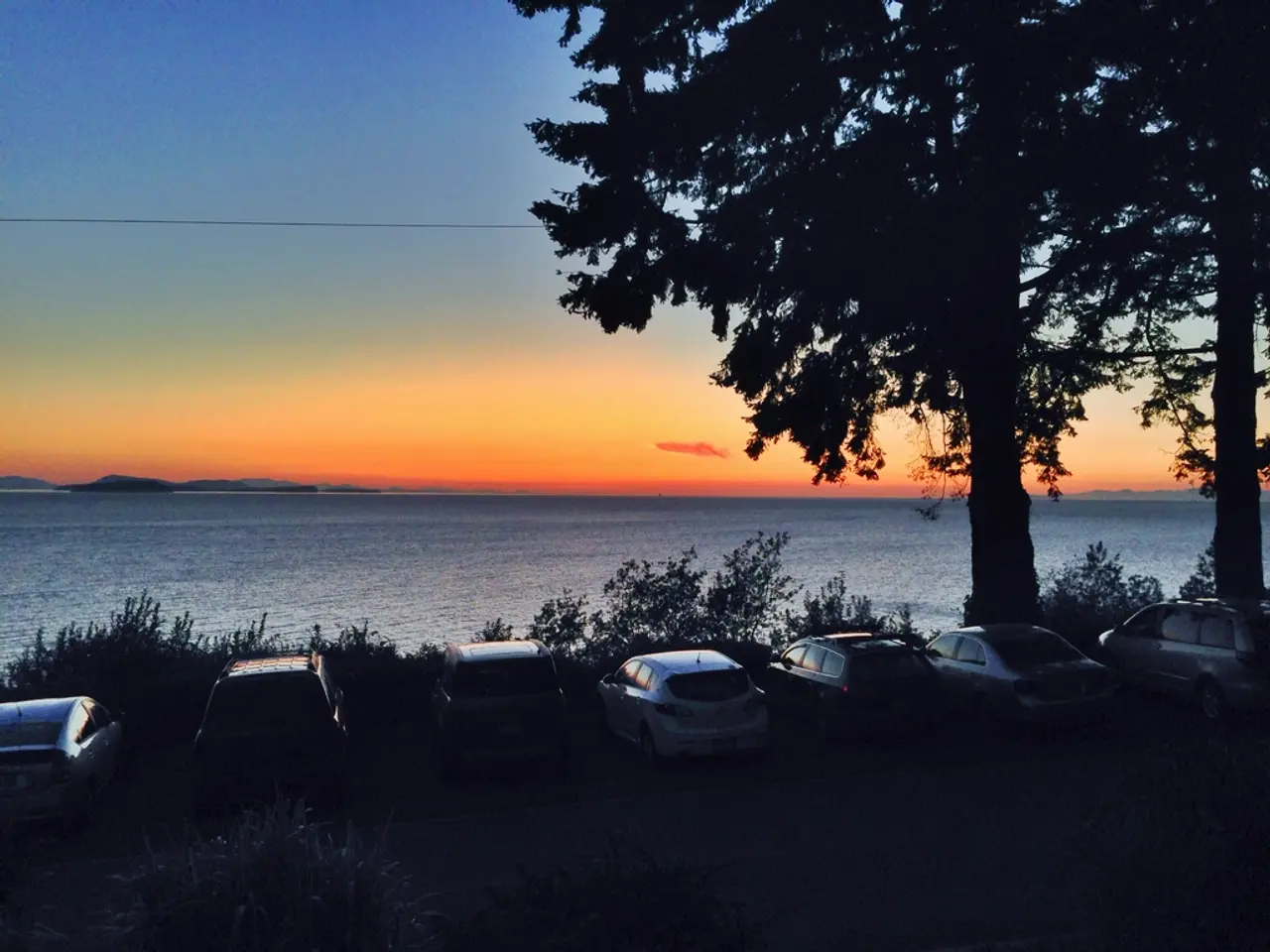Outdoor Swimming and Drought Conditions in North Rhine-Westphalia
North Rhine-Westphalia Braces for Summer Heatwave
North Rhine-Westphalia, Germany, is set to experience a heatwave in the coming days, with temperatures forecasted to approach or slightly exceed historical maximums.
According to meteorological data, the average high temperatures for August in cities like Bad Oeynhausen and Münster typically reach into the mid-70s to low 80s Fahrenheit (about 24-28°C), with the warmest days occasionally hitting the low 90s Fahrenheit (~33-34°C). However, forecasted maximum temperatures in August 2025 for Münster range up to about 32°C (90°F) on some sunny days such as August 9 and 14.
This near-record warmth is not unprecedented in the region. Historically, average July temperatures in NRW are about 17°C (63°F), so August tends to be slightly warmer as the peak of summer.
While the temperatures are expected to be high, they are not expected to break all-time extreme records, as heatwaves in the past have occasionally pushed temperatures higher.
The Rhine, the most important river in the country, is still well above the equal water level in Cologne, ensuring the river's fairway depth. However, several reservoirs, such as the Bigge and Möhne reservoirs, are only about three-quarters full. The Wupper reservoirs report only 59 percent capacity, with a downward trend.
The drought and low river levels have already led several authorities to ban private water withdrawal from rivers and streams. The effects of the significantly too dry past six months are clearly visible in the groundwater levels.
The DWD index for forest fire danger is increasing, rising from level 2 ("low danger") to level 3 ("medium danger") in most of North Rhine-Westphalia starting from Monday. The "Drought Monitor" of the Helmholtz Centre for Environmental Research shows "drought stress" for plants in the top 25 centimeters of available water.
Despite the increasing forest fire danger, a threatening drought is not expected in the near future. On the contrary, the tourism industry in North Rhine-Westphalia is experiencing a boost due to the summer weather, with more bookings and visits to attractions.
Ice cream parlors are seeing an increase in sales due to the hot weather, and the region's cities are expected to experience "tropical" conditions, with thermometer readings not dropping below 20 degrees at night. On Tuesday, the highest temperatures will range from 31 to 35 degrees Celsius, and on Wednesday, they could reach 36 degrees in some places.
The record high temperature for August in North Rhine-Westphalia is 40.1 degrees, reached on August 12, 2003 in Weilerswist-Lommersum near Euskirchen. However, the current forecasts do not suggest temperatures will reach such extremes.
In summary, the August 2025 temperature forecasts in North Rhine-Westphalia are close to, or somewhat above, historical typical maximums but do not indicate unprecedented extremes based on available 2025 forecasts and historical averages. The region is bracing for a heatwave, but not a record-breaking one.
| Location | Typical August High | Recent Predicted High (Aug 2025) | |------------------|---------------------|----------------------------------| | Bad Oeynhausen | ~24-28°C (75-82°F) | Mid to upper 20s °C (about 27-32°C) | | Münster | ~24-28°C (75-82°F) | Up to 32°C (90°F) on some days |
- The heatwave in North Rhine-Westphalia this August, with temperatures forecasted to reach the upper 20s °C, is reminiscent of environmental science and weather forecasting, indicating a shift in climate-change patterns.
- As the weather forecast for Münster in August 2025 predicts up to 32°C, the heightened forest fire danger, as indicated by the DWD index, underlines the significant role that weather-forecasting plays in environmental science.
- Despite approaching historical maximums, the forecasted August temperatures in North Rhine-Westphalia are not expected to break all-time extreme records seen in the past, demonstrating the ongoing study and understanding of climate-change in the realm of environmental science.
Read also:
- Memorial Gig Honoring Solingen Bombing Casualties
- Taiwan contemplates potential Chinese invasion depicted in media and games
- "Revolution sparks among women, instigated by 'The Lover's Man'"
- Multitude Gathers in Düsseldorf's CSD: More Than 7000 Individuals In Attendance for the "Love Unites, Hate Perishes" Demonstration








